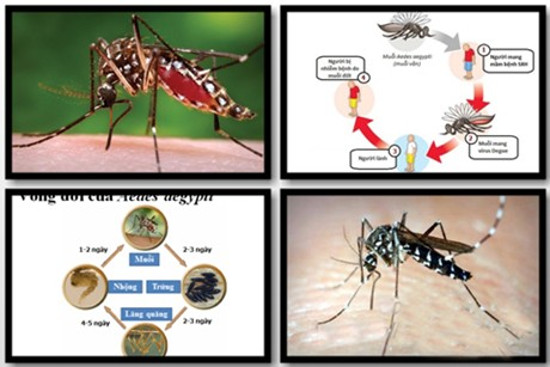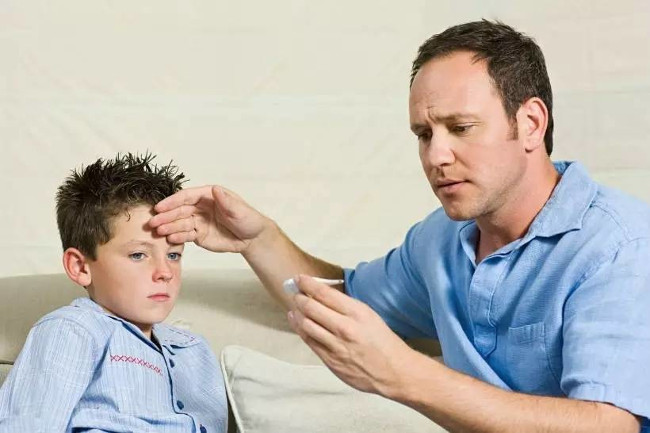How to recognize signs of dengue
- Preventing dengue epidemic should do the following 3 things well
Vietnam is a humid tropical country with monsoon, so the environment when seasonal weather is an environment creates favorable conditions for many pathogens to break out including dengue fever, disease can develop and spread. fast, affecting our health.
Dengue fever is an acute infectious disease that can cause epidemics caused by dengue virus. The disease is spread by mosquitoes that burn infected people and then spread the disease to healthy people through stings. Two types of infected mosquitoes have the scientific name of Aedes aegypti and Aedes albopictus, mainly due to Aedes aegypti.

This disease is often confused with typhus, because this leads to an outbreak of disease with the most serious complication is fatal shock. Because of the dangers of disease, we need ways to prevent and recognize the basic signs of the disease so that it can be suppressed so that it does not break out into a pandemic.
1. High fever

According to experts, the first sign of dengue fever is that patients fall into high fever. When the body temperature fever is always in the state of 39-40 degrees Celsius, the fever suddenly, lasts continuously for 3-4 days. Besides, the body always feels tired, rashes and nausea.
2. Bleeding (bleeding)

Hemorrhage may appear in many forms:
- Bleeding under the skin: these bleeding are often visible on the skin of small red spots, red spots or bruises.This sign is a bit like a mosquito bite, so we need to look closely.To distinguish stain from dengue and mosquito bites, we can stretch the skin around the red dot, if they are still due to hemorrhage, otherwise if it disappears, it is a mosquito bite.
- Also hemorrhage may be in the form of nosebleeds, bleeding in the roots, gums.
- Bloody or bowel movements (water vomits in brown, fecal stools like coffee grounds or magenta).
- Epilepsy in women, for pregnant women with dengue at the time of labor, is even more dangerous because there may be more blood loss .
3. Abdominal pain

Like normal abdominal pain, dengue fever also makes patients stomach dull, uncomfortable, sometimes want to vomit .
4. Shock sign

Shock is a sign of dengue fever when it becomes severe, this phenomenon occurs from day 3-6 of the disease. Dengue shock can occur at any age, but in young children and the elderly when dengue is present, there is a higher risk of shock. We can see that when a high fever is turned into a fever, it can happen even if the bleeding signs are not clear. Shock signs include:
- Children are tired, tight or struggling.
- Cold limbs.
- Little urine, may be accompanied by vomiting or bloody bowel movement.
If a family has a fever for 1-2 days, they should go to the hospital early to receive timely treatment. Although not all people with dengue can be shocked, we should be cautious about these diseases so that they are not life-threatening.
Note : Usually, the course of disease progression is from 2 to 7 days, the risk usually occurs on the fourth and fifth fever days: the patient is always in a state of fatigue, poor peeing, restlessness, and mild pulse. , lower blood pressure; more severe is the absence of vascular, blood pressure (manifestations of vascularity).
Patients need active treatment and support blood transfusions, untreated in time will lead to severe complications such as shock, vascular, hemorrhage of internal organs, hemorrhage . dangerous to live.
You should read it
- Dengue fever outbreak, you know how to prevent it?
- Foods to supplement for dengue
- How to prevent and treat dengue fever
- 3 simple ways to effectively prevent dengue
- Identify blood-sucking Aedes mosquitoes that transmit dengue fever to humans
- World Health Organization warns: Marburg - dengue virus is rare, horrible as Ebola re-exported
- What is viral fever? When you have a fever, what should you eat?
- 10 common diseases in children in the fall, symptoms and prevention
- Malaria parasites die quickly in blue dyes
- What color clothes are most susceptible to mosquito bites?
- Good news! Finding out a new specialty drug can treat Lassa fever
- 10 interesting things about mosquitoes, the smallest but most dangerous insects on the planet
May be interested

If you don't want cancer to knock on the door, don't forget to apply sunscreen to your eyelids!

When your body is tired and tired, the following foods will help you regain energy immediately

Stop exercising for a long time, what will your body do?

9 medicines and foods absolutely should not be used together

Eating breakfast regularly will curb food cravings at night

New research shows that vegetarian diet is twice as effective when losing weight






 Foods to supplement for dengue
Foods to supplement for dengue Dengue fever outbreak, you know how to prevent it?
Dengue fever outbreak, you know how to prevent it? 3 simple ways to effectively prevent dengue
3 simple ways to effectively prevent dengue World Health Organization warns: Marburg - dengue virus is rare, horrible as Ebola re-exported
World Health Organization warns: Marburg - dengue virus is rare, horrible as Ebola re-exported How to prevent and treat dengue fever
How to prevent and treat dengue fever Signs of printer running out of ink and effective, easy fixes
Signs of printer running out of ink and effective, easy fixes